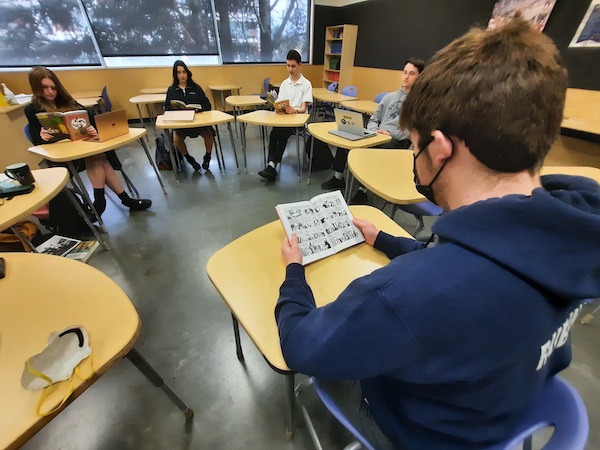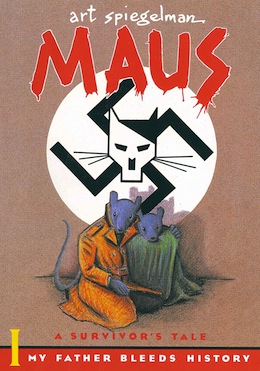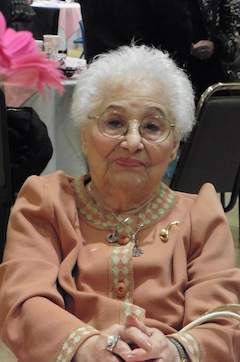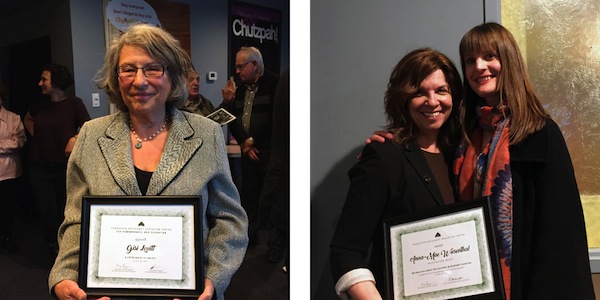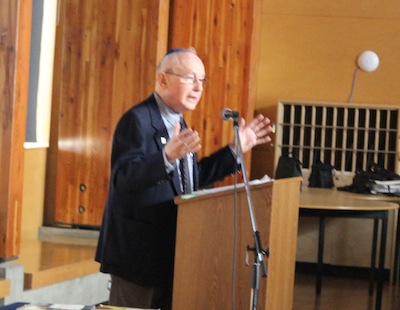Raphael Lemkin, a Polish-Jewish lawyer, coined the term “genocide” in 1944. (photo from Arthur Leipzig Estate, courtesy of Howard Greenberg Gallery, via ushmm.org)
Anna-Mae Wiesenthal was in the United Kingdom recently and passed a table in Dublin that was accusing Israel of perpetrating genocide against Palestinians in Gaza. She engaged the people at the table in conversation.
It was a small act of dialogue between a few individuals, but it reflects what Wiesenthal views as a vital act in mutual understanding.
Encouraging conversations like these is one of the reasons the Vancouver educator recently led a course at Temple Sholom on the definition of genocide.
Wiesenthal holds a master’s degree in Holocaust and genocide studies and is about to defend her PhD dissertation in the same discipline. Both degrees are from Gratz College, in Pennsylvania. She retired last year as a teacher at Vancouver’s King David High School.
The three-class course at Temple Sholom addressing the emotionally and academically challenging topic of genocide comes at a time when
Israel is being accused of perpetrating crimes against humanity in Gaza. The topic has immediate resonance. Wiesenthal’s intention, however, was to take a more nuanced approach to the subject.
“My goal when I retired is to continue to be an educator in different capacities,” she said. After discussions with Temple Sholom’s Rabbi Dan Moskovitz, she put together the course, which ran on three consecutive Wednesdays, ending March 19.
The focus, she said, was an examination of the concept, introducing students to when and why the term “genocide” was coined, in 1944, by Raphael Lemkin, a Polish-Jewish lawyer, and looking at its definition, examining the wording and identifying problematic components.
In 1948, the United Nations Genocide Convention defined “genocide” as: “Any of the following acts committed with intent to destroy, in whole or in part, a national, ethnical, racial or religious group, as such: killing members of the group; causing serious bodily or mental harm to members of the group; deliberately inflicting conditions intended to destroy the group in whole or in part; imposing measures to prevent births within the group; forcibly transferring children of the group to another group.”
“The word ‘intent’ in the definition is problematic,” Wiesenthal said, as an example of the exploration the class undertook. “How do you prove intent?”
The goal of the course, she said, was “to come out possibly with more questions or appreciation for the complexity of the definition.”
The small group of students analyzed the 10 Stages of Genocide, a framework developed and introduced in 1996 by Dr. Gregory H. Stanton, the founder of Genocide Watch, to help identify the warning signs of genocide and prevent it before it escalates.
These steps include classification (dividing people into “us” versus “them” based on ethnicity, race, religion or nationality); symbolization (assigning symbols or names to distinguish groups, such as the yellow Star of David for Jews in Nazi Germany); discrimination (dominant groups deny rights to a specific group, often through laws or policies); dehumanization (the targeted group is compared to animals, vermin, insects or diseases to strip them of their humanity); organization (genocidal acts are planned and coordinated, often by governments, militias or extremist groups); polarization (propaganda and hate speech are used to drive society further apart, making violence seem justified); preparation (authorities or groups begin making lists, planning logistics and even building camps or weapons for mass killing); persecution (victims are identified, isolated and deprived of rights, for example, forced deportation, concentration camps, starvation); extermination (the mass killing of the targeted group begins, often justified as “cleansing” or necessary for national security); and denial (perpetrators cover up evidence, deny crimes, blame victims or rewrite history to avoid accountability).
“It’s not always linear,” Wiesenthal said of the 10 stages. “Some of the stages can overlap, some of the stages may not necessarily be present, but it’s a way to identify and help you predict. If we see conditions of the stages unfolding then perhaps we can predict more accurately that there is groundwork being laid for genocidal actions.”
While Wiesenthal wanted to encourage depth of understanding on the topic, its immediacy – with Israel being accused of genocide by groups including Amnesty International and Human Rights Watch – led some students, and the Independent, to pressure her to comment on current events.
“What do we say when somebody says Israel is committing genocide?” Wiesenthal asked. “I could ask a question like: What is your understanding of genocide? What does that mean to you?”
If Israel wanted to commit genocide, Wiesenthal noted, they have the military capacity to have done so on the first day of the war. This is perhaps the most immediate, if not entirely nuanced, response.
“You can make all kinds of arguments about how there was or wasn’t enough humanitarian aid and food trucks entering Gaza,” she said. “The fact is there were food trucks entering.”
There could be legitimate discussions about what Hamas did with that aid once it entered Gaza. But, she said, the larger issue is that governments that plan on committing genocide do not provide victims with humanitarian aid, nor do they provide vaccines for children, as Israel has done.
Military experts, such as John Spencer, who specializes in urban warfare, has said that the civilian casualty ratio in Gaza is “historically low for modern warfare” and cites Israeli Defence Forces estimates that 50-60% of Gazans killed have been civilians, well below the 80-90% of civilian casualties typical in modern conflicts.
Spencer has praised the Israeli military’s efforts to minimize non-combatant harm, citing mass warnings to Gazan civilians, providing evacuation and relocation directives to reduce casualties, and the use of “roof knocking” techniques before airstrikes.
While Israel has been condemned for using 2,000-pound bombs in urban areas, Spencer has claimed that these are standard for penetrating fortified underground structures, like Hamas’s extensive tunnel networks, and contends that their use is not intended to cause unnecessary destruction but to legitimately and effectively serve military objectives.
Wiesenthal turns the genocide narrative around, noting that Hamas has explicitly dedicated itself to committing genocide against Israelis and Jews, both in writing and in its repeated expressed statements.
“It is part of Hamas’s charter and something they verbally repeated, that their goal is to get rid of Jews, and their readiness to commit Oct. 7 over and over again,” she said.
This goes to the challenging issue of intent on the part of both Israelis and Hamas, she added.
“If given the opportunity, Hamas [has said it] would kill every Jew in Israel and destroy Israel,” said Wiesenthal. “Israel is not targeting the Palestinian people or the Palestinian population in Gaza. Their campaign is solely directed at the terrorist organization Hamas, which is existentially threatening Israel. Israel is responding to a genocidal attack.”


